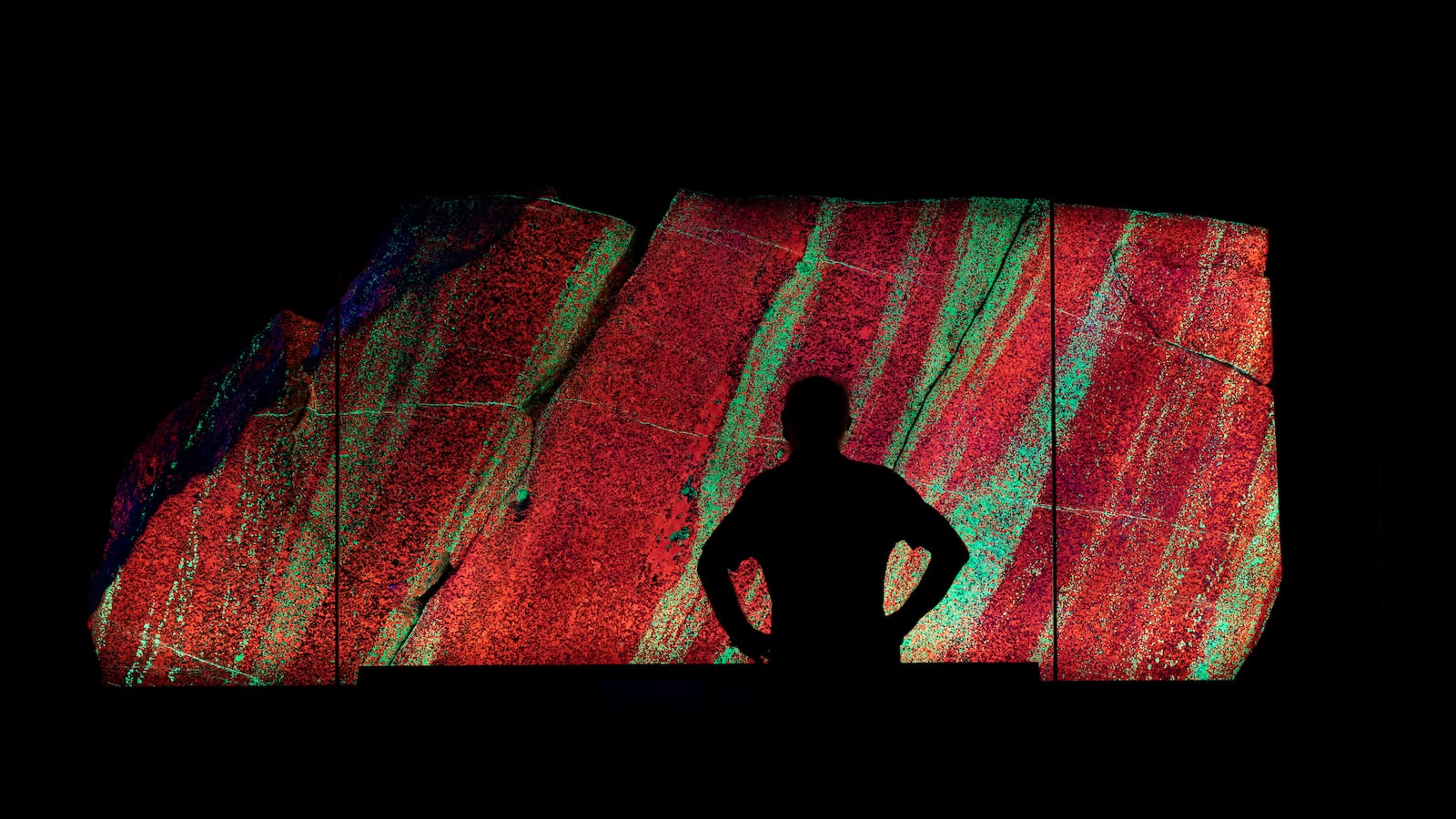Things are looking up for New York City. A summer of post-vaccine fun is in full swing, people are returning to the city, it just got a brand new park, and now one of its most iconic cultural attractions has a brand new hall devoted to all things sparkly.
Opening this weekend is the Mignone Hall of Gems and Minerals at the American Natural History Museum on the west side of Central Park. It gives a once outdated corner of the museum a much needed update that brings it in line visually with most contemporary museum displays—but with a more spacious feel and with warranted attention drawn to some of the collection’s more grabbing pieces. It doesn’t reinvent the wheel, but it does make it spin a little easier.
Visitors to the new space will be immediately confronted by one of those pieces—12-foot-tall geodes with glittering amethyst inside that put one in the proper state of wonder. Once past these magnificent specimens, the hall is laid out with a couple columns of glass cases in the middle and then more cases ringing the sides. On the right side (if you’re facing the way you would as you walk in) are the rooms specifically devoted to gems and temporary exhibitions.

It is a space that provides plenty for those who just want to gawk but also for those who want to learn.
For the gawking, there is everything from the ruby-colored elbaite tourmaline straight out of a Marvel movie set (that also is one of the largest mineral crystals ever found) to a mesmerizing pillar of labradorite called the Singing Stone rocking toxic-looking ripples of green and blue.
Then, of course, there is the gem collection, its two most famous attractions being the 563-carat “Star of India” sapphire and the 632-carat Patricia emerald. While I’d say that the Smithsonian’s gem collection in D.C. has more stars, the American Natural History Museum does a much better job at making the history of the stones we use as gems more interesting and relevant. Plus, less “famous” ones like zircon and peridot get lots of spotlight.
In the room following the permanent gem display is a temporary exhibition on animals in jewelry. There are serpents, butterflies, birds, and even crocodiles (María Félix reportedly brought live baby crocodiles into the offices of Cartier as models). While the pieces are glittering enough to make just wandering through plenty of fun, those who want to dive deeper should pay close attention to the houses that made many of the pieces—Mellerio, Sterlé, Boucheron, Bıçakçı—and use them as a jumping off point for your own investigations into the great jewelry designers.

But learning opportunities are everywhere to be found. In the corners of the main hall are spaces devoted to what the museum calls “basics”—one focuses on the basics of a mineral, another on the basics of crystals. In the columns running the center of the floor, one can learn how much of modern life revolves around feldspar or about the central role George Kunz played in the history of American jewelry and mining.
I’ve never been a science guy, and so some of it went over my head, but I did walk away with a better understanding of some things, like gem cuts and how they affect what I’d have said is how sparkly or not something is. Plus, there are all the neat factoids like how emery boards are covered in ground corundum, the second-hardest mineral.
And given how long so many of us have been without these spaces that can both entertain and inform because of COVID-19, it’s hard not to just love that I spent a couple hours exploring and walked away with something like that.

